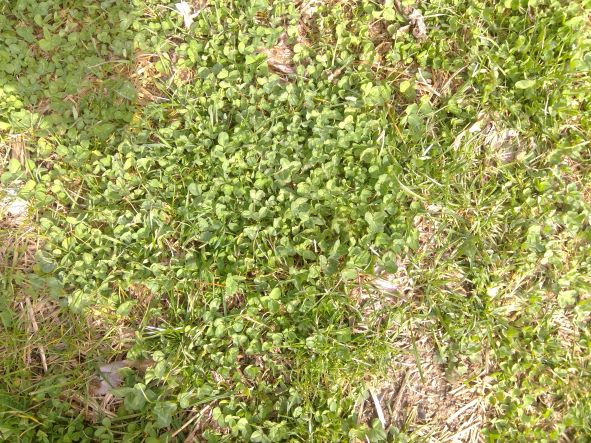By Gabe Ross, Farm Manager

With Winter winding down at Gallant Farm it’s time to start thinking about the coming growing season. Usually the first thing we plant every year is red clover. We accomplish this through a method called frost seeding. Frost seeding is when you broadcast seed on the frozen morning of a day that will thaw out in the afternoon. It works best when the weather does this for multiple days in a row. The seed spread over the frozen ground goes into cracks and places the soil is heaved up. The seed is then buried with the repeated thawing and re-freezing of the ground.
This technique is often used to add legumes which are high in protein into a pasture or to add them into fall planted wheat. It is a good way to plant without any tillage. Red clover seems to be the most common species used for this but Alfalfa and other clovers can be frost seeded as well. I have also heard of Forage Chicory being planted this way and we may try some of that in the coming week. These plants are all small seeded crops whose seeds do not rot easily.

While I have had some success frost seeding grasses, clover and alfalfa are the most successful in my experience. Frost seeding can be done on top of snow which makes the seed easy to see so you know what areas have been seeded. This can be risky, if the snow is on a slope or melts too quickly the seed could run off before it is heaved into the soil. A broadcast seeder like the one pictured was often used in the past for broadcasting many types of seed. It works great for frost seeding because you just walk with it and you don’t have to use a tractor which could cause compaction this time of year even on frozen ground. Frost seeding could be a good way to get an early Spring nitrogen fixing cover crop into gardens as well. Come up to the farm later in the year to see the results.







